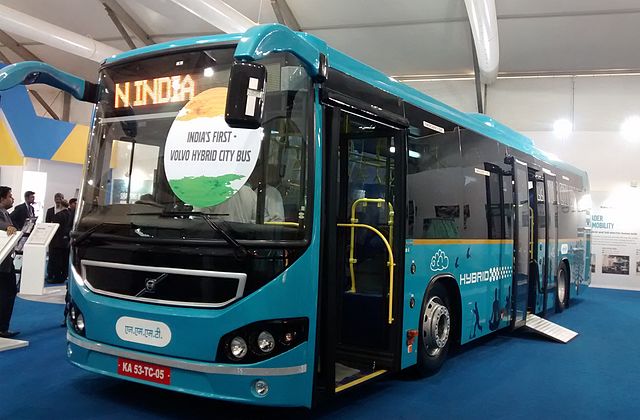This is a continuation to a previous post, The Rainbow Across Pune and Pimpri-Chinchwad.
Several significant changes have happened since then; notably the following:
- Bus Number 324 has been renumbered to Vajra 6 from Hinjewadi Phase 3 [Maan Gaon] to Bhosari, running almost entirely along the Wakad Chowk-Nashik Phata Corridor.
- All buses heading for Hinjewadi use the BRTS corridor from Mankar Chowk to Wakad Chowk, where land is still required to build a bus lane for the last half kilometre.
- A new BRTS Terminal has been built at Bhosari under the flyover, similar to the one at Kiwale.

Nothing significant has happened on the Nagar Road corridor under PMC and Kalewadi to Empire Estate and Nigdi to Dapodi corridors under PCMC barring the construction of the Nigdi Bhakti Shakti terminal.
However, a lot of new kinks need to be ironed out in this system, and it is crucial that it is done before any damage happens.

The Major problem is the Mixed-Use BRTS and non BRTS sections, most prominent along the Wakad to Nashik Phata corridor. Vajra 6 runs as a non-BRTS bus from Hinjewadi Phase 3 till Wakad Chowk from where it takes the BRTS till Mankar Chowk. From here, it gets into Kaspate Wasti and then gets on to the BRTS corridor at Kalewadi Phata where it stays till Nashik Phata, after which it runs as a regular service till Bhosari Terminal which is a BRTS terminal. This Regular-BRTS-Regular-BRTS-Regular-BRTS system is confusing, for both the passenger as well the driver. It is dangerous for the latter, as he has to go Left-Right-Left-Right while opening the door. Several buses have opened the BRTS doors in a non BRTS area while in motion.
The system needs a bit of automation, which would ideally be a little tricky at this stage given PMPMLs finances. Along with this, the driver needs to be given a single switch for both the Left side doors, and a one for the Right-side doors. There should be an indicator on the ceiling of the bus that can be a simple LED strip on either side. Depending on which side doors are to open, the corresponding LED strip can glow.

PMC vs PCMC
On a comparitive level, PMC and PCMC have slightly different bus stations. The former are visually more appealing, have Footbridges and Subways at several stations, and are overall better to be in.
However, the PCMC section is longer, consists of better planned corridors, of which two [Aundh-Ravet and Nigdi-Dapodi] are massive. The two PMC corridors: Nagar Road from Yerwada towards Wagholi, and Sangamwadi to Vishrantiwadi are not connected to each other. One hopes that the PCMC and PMC find a deal with the Kirkee Cantonment Board to build a corridor via Khadi to connect the BRTS corridor from Holkar Bridge to Harris Bridge, which could ideally connect the Sangamwadi and Dapodi corridors.
Vishrantwadi Terminal
BRTS Buses terminating at Vishrantwadi [like Vajra 4] run along the corridor from Sangamwadi to the Wadi terminal. Barring the terminal, all stations use the BRT doors. The terminal on the other hand, is just a series of bus stops on the left side of the service lane with the last two bus shelters reserved for Rainbow buses. This is rather disappointing, as PMC could have done what PCMC did with the Bhosari and Kiwale terminals.
The Bhosari terminal meanwhile, lacks a platform for buses bound to Pune station [via Vishrantwadi], which continue to terminate under the flyover. Both Bhosari and Kiwali need to be provided with a fence to prevent private vehicles from parking next to the BRTS platform.
BRTS Parking
Since most of the stretch from Kokane Chowk to Nashik Phata didn’t exist prior to the the BRTS, the PCMC has ensure that all commercial buildings along the stretch that lie in the vicinity of a BRTS station have allocated a part of their Ground Floors as Parking Space for Buses. This is great, and helps out massively with the ‘Park and Ride’ concept.
Overall
Overall, PMC scores in the design part, but lags in the execution part. It is highly disappointing to see the only major infrastructure development on Nagar Road taking so much time to be complete.
An interesting thing to note is that all buses running along Vajra 6 make use of the Ashok Leyland buses from the Bhosari depot and not Tata buses.
PMPML's Rainbow gets more advanced! Share on X ![]()

![Nagpur Mahanagar Parivahan Limited [NMPL]'s Scania biofuel bus.](https://upload.wikimedia.org/wikipedia/commons/thumb/d/d6/MakeInIndia-NMPL-Scania-Ethanol.jpg/640px-MakeInIndia-NMPL-Scania-Ethanol.jpg)



